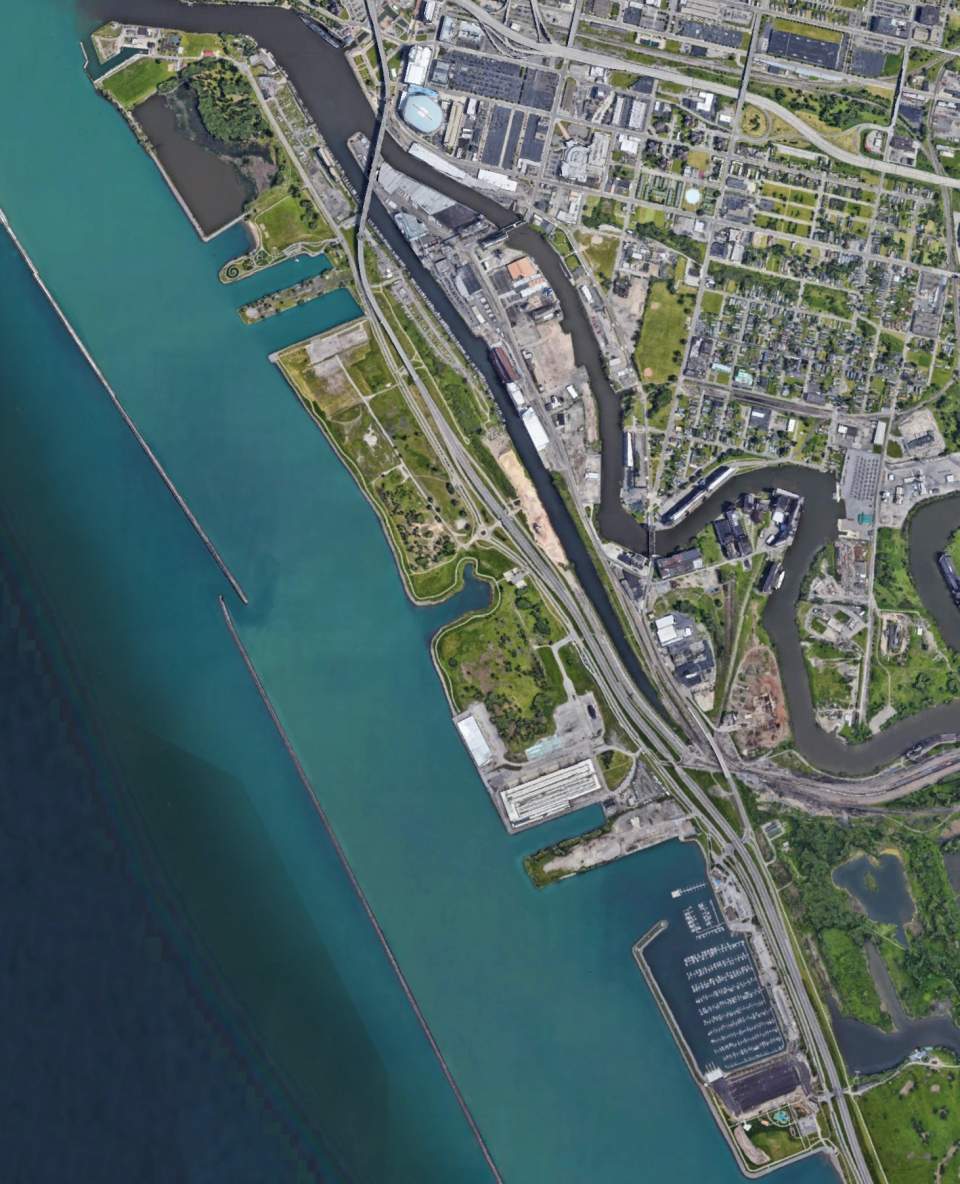News Take Action
PPG's Comments on the Erie Canal Harbor Development Corporation General Project Plan
| Date: | January 6, 2021 |
| Share: |

The Erie Canal Harbor Development Corporation is accepting comments on the General Project Plan (GPP) for the Outer Harbor until Friday, January 8, 2021. To submit comments, email Landgprojectcomments@esd.ny.gov. Read on for Partnership for the Public Good's comments and recommendations on the plan, authored by Senior Policy Fellow Sam Magavern.
January 6, 2021
Thank you for the opportunity to comment on the ECHDC’s General Project Plan for the Outer Harbor. We welcome the Plan’s emphasis on green space and park-like uses but offer the following suggestions for improvement.
- Postpone the GPP process until after the pandemic subsides, to allow for an in-person public meeting and more robust discussion. While the ECHDC has obtained public input in making its plan, the draft plan itself should be presented in an interactive, highly accessible process in which ECHDC explains its decisions and the public responds.
- Make the Outer Harbor a state park. In many good ways, the GPP treats the Outer Harbor like a park. It would be much stronger, though, if it included actually making it a park. A time-limited economic development corporation is not the optimal steward for public lands with great ecological importance and beauty, including state-designated Significant Coastal Fish and Wildlife Habitats and a Globally Significant Bird and Pollinator Habitat. The City of Buffalo is severely “under-parked,” with only 7 percent of its land used for public parks (New York City, by contrast, is 20 percent park). People of color and people with low incomes, in particular, suffer from this lack of access to recreation and natural beauty. A state park would:
- Permanently protect the site’s natural and historic assets;
- Ensure long-term funding and expert stewardship;
- Maximize the potential of the site for its best and most appropriate uses: ecological protection, historic preservation, and nature-based recreation;
- Promote economic development by drawing more companies, new residents, and tourists to Buffalo, attracted by an Olmstedian park in one of the most remarkable locations on the entire Great Lakes.
- Include Terminal A. The Ford factory, a designated local landmark, is an integral part of the site. Segmenting it off suggests that the ECHDC may sell it to private developers. With its rich history, developed infrastructure, ample parking, and strategic location, Terminal A should be a key part of the plan to make the Outer Harbor a world-class park. It can provide long-term revenue for the park and a home for active uses to complement the passive uses appropriate for the more natural areas of the site.
- Make a new plan for Terminal B. The plan for Terminal B should be integrated with planning for Terminal A. It should not include a performance amphitheater. Western New York has many sites for concerts and events already; it does not make sense to devote precious waterfront land to this non-water-based use that will only compete with existing venues battered by the pandemic. Large events do not belong on the Outer Harbor, which lacks the street patterns and public transit options to accommodate the traffic and parking. The crowds will inevitably damage the natural environment. Particularly disturbing is the plan to use green space for overflow parking.
- Make the First Buffalo Marina site a green gateway. Thankfully, the GPP does not include residential or commercial development on the Marina site, but it notes that the site is zoned N-3E, Urban Neighborhood (Mixed Use Edge) and appears to contemplate future development. We believe that residential and commercial development belongs in city neighborhoods with high vacancy rates, crippling lack of density, and already-existing infrastructure – not on public, waterfront land best used for universally accessible recreation and natural regeneration. The GPP should make this site a “Green Gateway” to the Outer Harbor, inviting people viewing it from downtown Buffalo to take the Ferry across for a natural experience.
- Prioritize the climate emergency. We are in a state of dire, planetary crisis caused by greenhouse gas emissions. Recent storms have wreaked havoc on structures, paths, and trees on the Outer Harbor, making some of the GPP’s plans seem unrealistically vulnerable. A 20-year plan for a large, waterfront site should address how the site will be used to
- mitigate emissions – including prioritizing public transit, a key omission from the Plan;
- adapt to climate disruptions, such as increasing storms, flooding, and changes in water levels, and
- promote climate resiliency by, among other things, enhancing natural buffers.
- Focus more on natural regeneration and biodiversity. There are many ways to help land and water heal from decades of pollution and provide better habitats for fragile and endangered flora and fauna. These strategies, such as native plantings and bio-remediation, should be front and center in the Plan and should be combined with public education, so that visitors to the Outer Harbor can learn from them.
- Include public art. The ECHDC has had great success with public art projects, ranging from Shark Girl at CanalSide to the Robert Indiana installation on the Outer Harbor. Buffalo is fast becoming known as one of the premier sites for public art in the nation. The GPP should include collaborating with the Albright-Knox public art program and other arts organizations to create public art that responds to the unique natural beauty, rich history, and ecological importance of the site.
Thank you for considering these remarks. PPG joins in the comments of the Our Outer Harbor Coalition and asks you to review our report, Buffalo’s Outer Harbor: the Right Place for a World-Class Park, for more detailed information and analysis.
Sincerely,